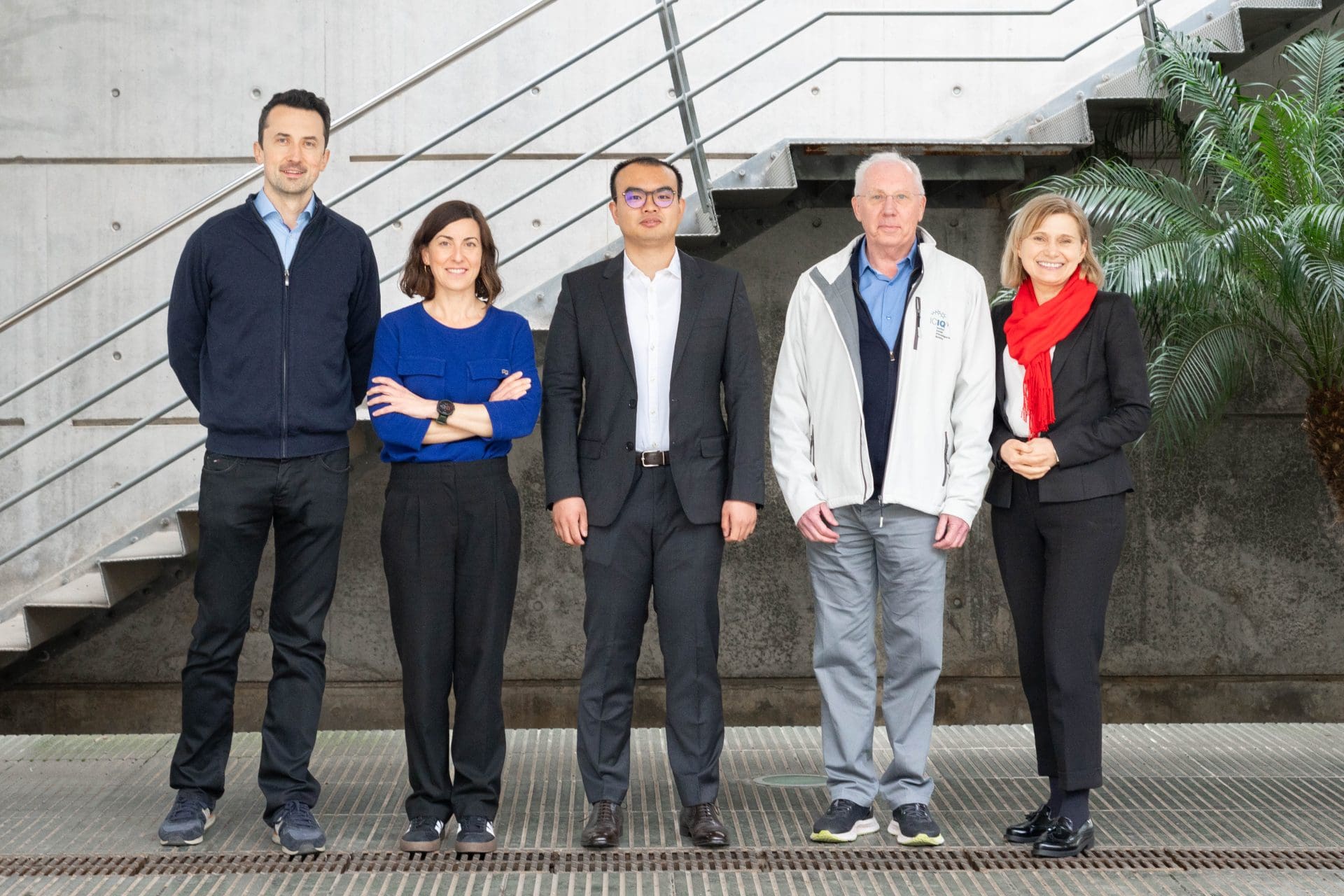Easily processable Single-Molecule Magnets
14th November 2014 – The collaboration between two ICIQ’s research groups (P. Ballester and J. R. Galán-Mascarós) has allowed the design, synthesis and characterization of a new family of complexes that exhibit single-molecule magnet behaviour with high blocking temperatures.
Single molecule magnets (SMMs) are molecules that show magnetic behaviour below a certain temperature known as blocking temperature. They have magnetic memory effect at the single-molecule level and, for this reason, they have been proposed for application in high-density information storage and quantum computing. Additional effects like negative differential conductance and complete current suppression suggest that SMMs could also find uses in electronics.
One of the main problems is that most SMMs show magnet-like behaviour at blocking temperatures (TB) below to 4 K. A lot of research has been done in the search for solutions to this problem and lanthanide-based double-decker phthalocyanine complexes have been found to exhibit the highest blocking temperatures reported to date (TB>55K). Nevertheless, the poor solubility and stability in the gas phase of these compounds makes difficult the deposition on surfaces for further studies.
In this work, a series of neutral double-decker complexes of lanthanide cations with tetraazaporphyrins have been synthesized and characterized. The Tb3+ and Dy3+ derivatives exhibit SMM behaviour with high blocking temperatures over 50 and 10 K respectively and, in contrast with their Pc counterparts, the use of tetraazaporphyrin ligands endows them with extraordinary chemical versatility: they are highly soluble in common organic solvents and easy to process even through sublimation. This is a key point for further studies, since the next step is the deposition of monolayers of these complexes onto surfaces for studies by electron microscopy.

Scanning Tunneling Microscopy (STM) image of a layer of Dy(OETAP)2 molecules, as sublimed on gold. Image provided by Davie Écija and his team (IMDEA Nanoscience Institute, Madrid)
“From a scientific point of view is very interesting to study this type of molecules. There must be about 10 or 12 SMMs with analogous magnetic properties but ours have the advantage of being easily processable, what we were able to change the organic skeleton in order to make it smaller and more flexible. Now what we do is try to exploit the advantages of this molecule working with physicists who prepare monolayers to do single molecule STM (Scanning tunneling microscope) measures. From a chemical and a magnetic point of view there is nothing new. However, processing is as important as physical features when one wants to look for real applications” –says Prof. Galán-Mascarós.
When asked about the collaboration with his colleague at ICIQ, Prof. Ballester says: “He knew he wanted molecules with certain characteristics and we, using our expertise and knowledge in the field of organic chemistry, have made the design and synthesis of these compounds. The multidisciplinary approach allows a synthetic organic chemist to prepare a molecule whose properties as new materials will be studied by other research groups”.
This article has been selected as Very Important Paper and has been highlighted in the ChemistryViews website.
Single-Molecule-Magnet Behavior in the Family of [Ln(OETAP)2] Double-Decker Complexes (Ln=Lanthanide, OETAP=Octa(ethyl)tetraazaporphyrin)
N. Giménez-Agulló, C. Sáenz de Pipaón, L. Adriaenssens, M. Filibian, M. Martínez-Belmonte, E. C. Escudero-Adán, P. Carretta, P. Ballester, J. R. Galán-Mascarós
Chem. Eur. J., 2014, 20, 12817-12825
Related news

Let's create a brighter future
Join our team to work with renowned researchers, tackle groundbreaking
projects and contribute to meaningful scientific advancements






 20-02-2025
20-02-2025 



















